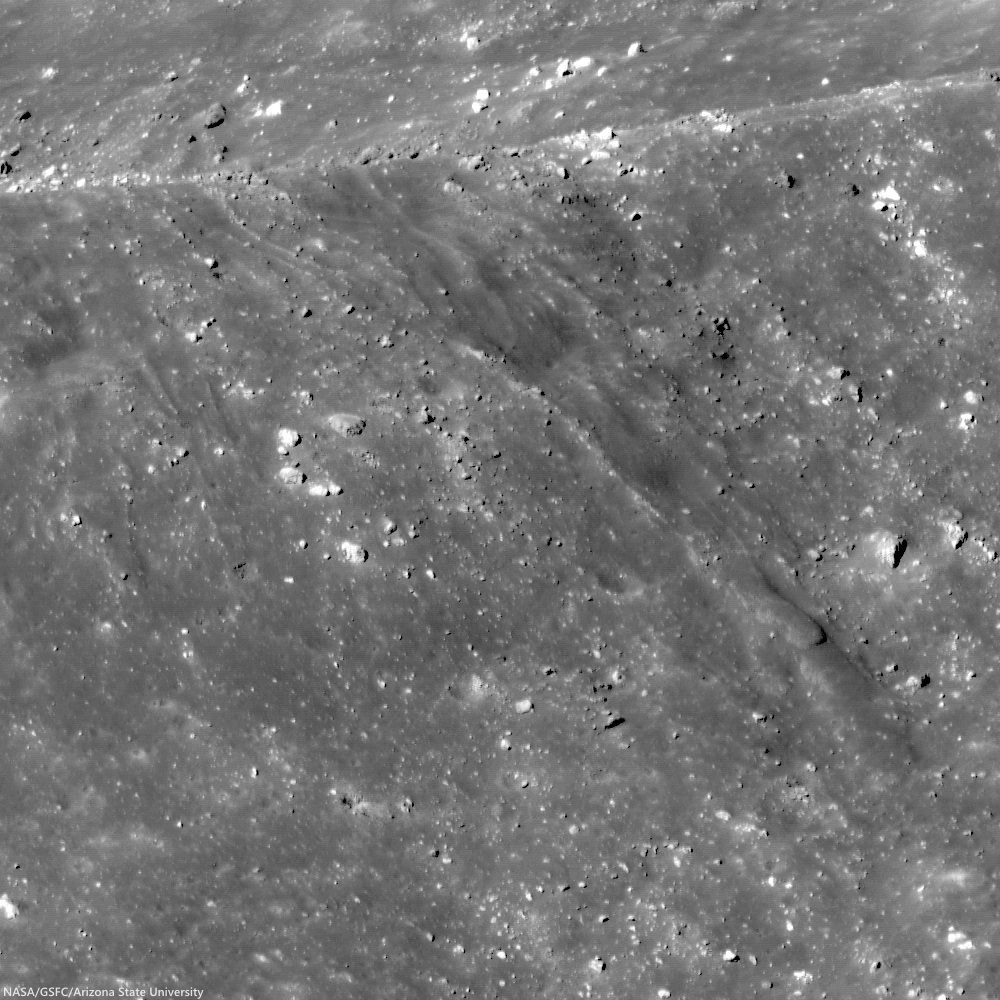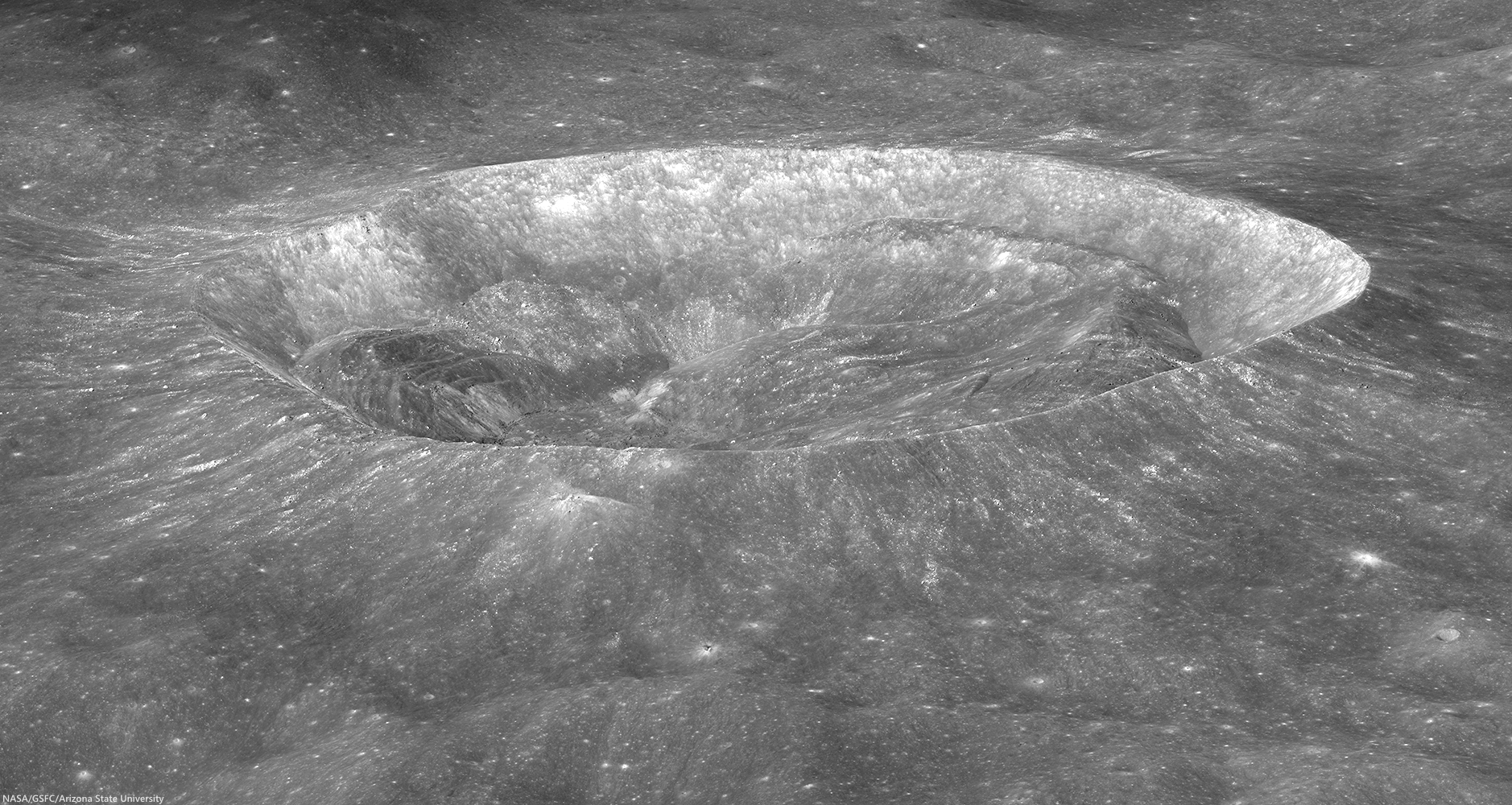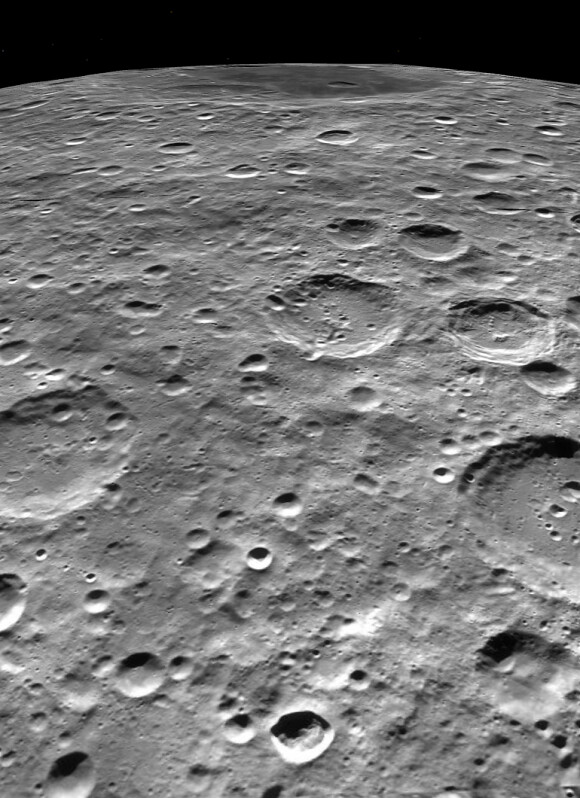 |
| LROC NAC view of the south wall and rim of splendiferous Larmor Q crater, looking obliquely east-to-west; LROC NAC oblique mosaic M174081337LR, LRO orbit 10788, October 24, 2011; 44.93° incidence angle, resolution roughly 2.3 meters, spacecraft and camera suite slewed 67° from orbital nadir, 59.44 km over 28.84°N, 211.72°E [NASA/GSFC/Arizona State University]. |
LROC News System
Larmor Q (28.674°N, 176.32°E) is sub-circular crater, whose 23 km diameter is measured north to south and 19 km measured east to west.
But Larmor Q is not just another stunning crater; it is also scientifically interesting. Oblique images, like the one below, provide a unique vantage point that can help with geologic interpretation.
But Larmor Q is not just another stunning crater; it is also scientifically interesting. Oblique images, like the one below, provide a unique vantage point that can help with geologic interpretation.
HERE, and larger, complex craters like Tycho or Copernicus.
The crater Giordano Bruno (21 km in diameter) is another example of a transitional crater. Wall slumping in transitional craters affects the final crater shape. When the northern wall of Larmor Q failed, the northern rim crest of the crater moved outward, contributing to the larger crater diameter in the north-south direction.
The crater Giordano Bruno (21 km in diameter) is another example of a transitional crater. Wall slumping in transitional craters affects the final crater shape. When the northern wall of Larmor Q failed, the northern rim crest of the crater moved outward, contributing to the larger crater diameter in the north-south direction.
 |
| Prominent features of Larmor Q include slumped wall material and impact melt deposits; located at 176.313°E, 28.634°N [NASA/GSFC/Arizona State University]. |
 |
| View of impact melt deposits inside Larmor Q. The melt has splashed up the southern wall (left) and ponded in the floor of the crater (center of image)[NASA/GSFC/Arizona State University]. |
 |
| Flows of impact melt on the rim of Larmor Q crater now solidified into lobate deposits [NASA/GSFC/Arizona State University]. |
HERE.
Related LROC Featured Images:





No comments:
Post a Comment